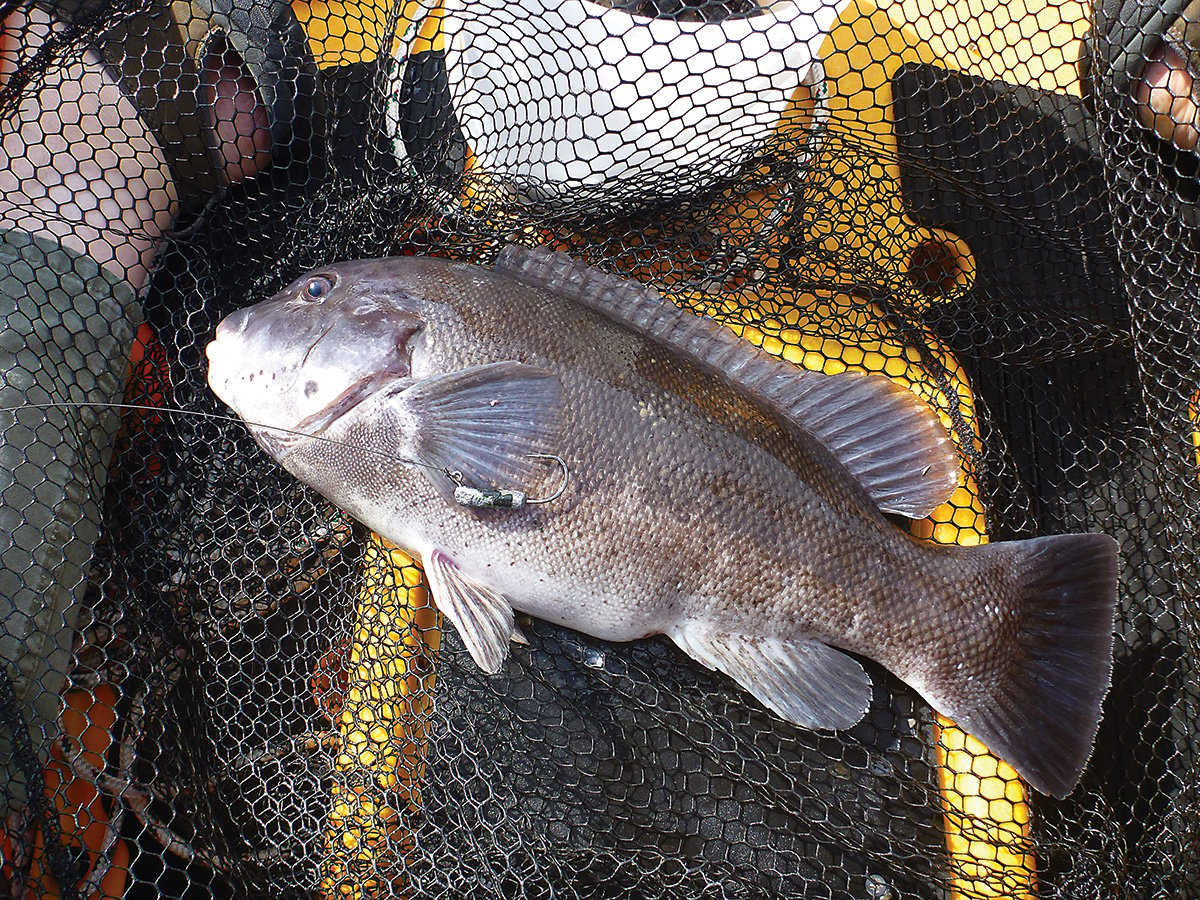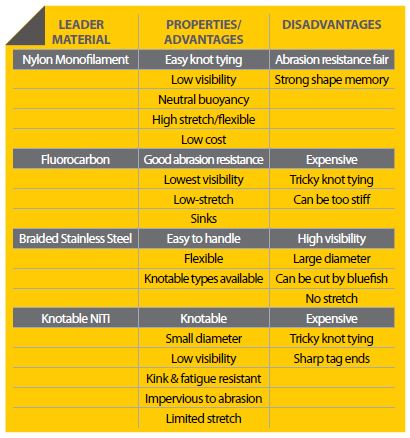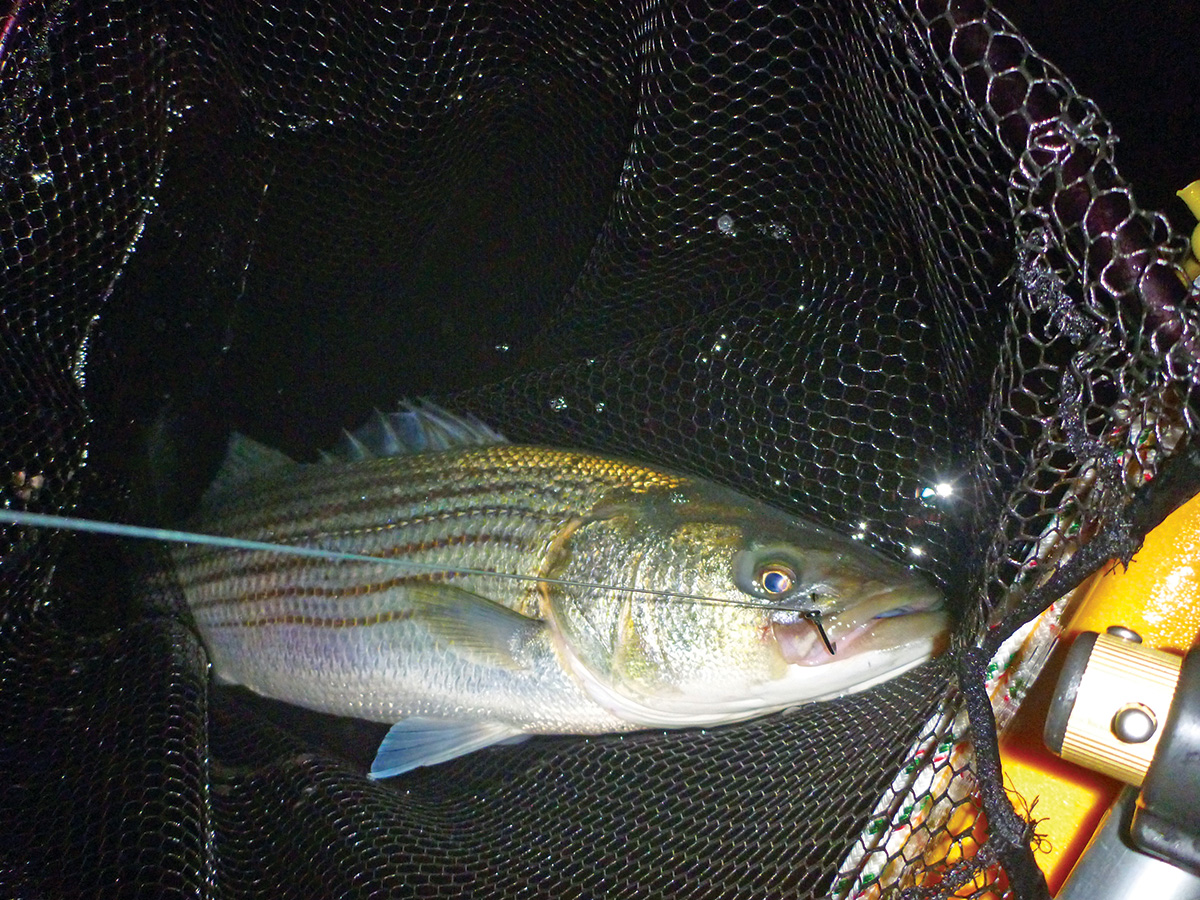
My rod bowed deeply as the teen-sized bluefish ran, peeling a couple dozen yards of 30-pound braid off my reel. Suddenly, my line parted with an audible “ping,” and I stumbled backwards slightly. When I reeled in my line I saw that the end of the braid had a few tight coils and was not frayed. It appeared the knot had failed from fatigue. I cursed myself for my laziness. The fish I lost would have been the twenty-second teen-sized bluefish I had landed that week using the same popper with the same 40-pound test titanium leader. If I had just taken a minute to re-tie that knot, I might still have that leader, and that plug, today.
I looked around me. The dock on which I was fishing was crowded with anglers. Most of them weren’t using any leader at all, and most of them were losing one or two plugs for each fish landed. Some just lost lure after lure and didn’t land even a single fish during the two hours I was there. A nearby garbage bin was overflowing with the wrappers from new plugs. I was dismayed at the scene. Not only were these people throwing away their money losing so many lures, it was not very good for all those blues either, swimming away with their mouths full of hooks. From this experience, I felt a basic primer on fishing leaders was needed.
Let’s start by defining the term “leader” as it pertains to fishing. A leader is an extra piece of line added to the end of the main line coming off your fishing reel. It may or may not be made of the same material as the line on the reel’s spool, but is almost always of a different strength and texture. A leader serves three basic purposes, though not always all three at the same time. First and foremost, it provides extra abrasion resistance to the part of your line that’s subjected to the most wear and tear. Second, a leader can be of a different stiffness from the main line to help properly present a bait or lure, such as in fly fishing. Lastly, some leader materials offer low visibility, which can be helpful when angling for wary fish in clear water.
It is the first two qualities that are of most concern for saltwater anglers in the Northeast. Our waters tend to be quite turbid for most of the year, so visibility is not usually a concern, but there are occasions when gamefish like stripers and even blues can become leader shy. Never rule out this possibility, especially if other anglers are hooking up and you are not. I’ve seen times when bluefish would not strike a lure with a wire leader, and times when using a 20- or 30-pound leader resulted in more strikes from striped bass than when using a 40- or 50-pound leader. And if false albacore are on your itinerary, visibility is always a factor with these keen-eyed fish. Fluorocarbon no heavier than 20-pound test is always the way to go for these keen-eyed speedsters.

Leaders are used in different configurations depending on what type of fishing is being done. A leader can be part of a knotted rig of fluorocarbon for bottom fish such as tautog, it can be a simple 3-foot piece of wire when casting plugs for bluefish, or it might be a 20-foot topshot of nylon monofilament on a reel spooled with braided line for codfishing. For most applications a leader is best attached to your main line by means of a barrel swivel. For leaders over about 4 feet in length however, it is more practical to use a knot-to-knot connection to avoid having the swivel repeatedly collide with the tip guide on your rod. There are certain fishing situations where a leader is not needed, such as casting lures for non-toothy fish while using a reel spooled with either mono or fluorocarbon, but for most fishing applications a leader is recommended, especially if your reel is spooled with braided line.
There are three basic types of leader materials that everyone should be familiar with and have in their arsenal over the course of a season. Let’s go over each and discuss their individual applications, attributes, advantages and disadvantages.
Nylon Monofilament
Commonly known as mono, this is the leader material anglers tend to be most familiar with. Mono might be considered a general-purpose leader material. It can be used for a wide variety of fishes and fishing methods, but it doesn’t have any truly superior qualities that make it a top choice for a specific application. Still, if I had to choose only one material to use, this would probably be the one. It is the least expensive, is the easiest for tying knots, and has fairly low-visibility. Mono has a high degree of stretch and it readily absorbs water, so it will become softer over the course of a trip. These qualities may be desirable or not depending on the type of fishing you’re doing. Mono’s clear disadvantages include abrasion resistance, which is only fair to moderate, and strong shape memory, meaning that pre-made leaders stored coiled up will take on that shape over time and may need to be stretched straight before use.

Mono leader material can be purchased on spools or in pre-cut 4-foot lengths at any bait and tackle shop. Some brands of regular mono meant for filling reel spools are also well-suited for use as leader material. Personally, I use Trilene Big Game exclusively. I find it has good amounts of both stiffness and abrasion resistance to get the job done, and it’s quite cheap to buy in 1/4-pound spools.
We’d be remiss not to mention Perlon leader material, another nylon much like monofilament, but much stiffer and with excellent abrasion resistance. Its diameter is normally greater per pound test than mono, which adds to its stiffness, making it a good choice for teasers, dropper loops or bottom fishing rigs for species like blackfish or sea bass. That stiffness, especially in higher pound test, makes it more difficult when it comes to tying knots.
Fluorocarbon
Fluorocarbon is technically also a monofilament line, as it is extruded in a single strand, but is made from a different material than what is commonly referred to as “mono.” Its main advantage for inshore saltwater anglers is its high degree of abrasion resistance as compared to that of mono. When fluorocarbon first came out back in the ‘90s I gave it a try, but after a few mysterious break-offs quickly stopped using it. In the last few years however, it’s found a welcomed place in my tackle box again. Fluoro has been a game-changer for me when fishing for tautog from my kayak amongst barnacle-encrusted boulders. I’ve also found it to be useful for fluking, as its stiffness presents the bait well, and its abrasion resistance helps to preserve those last few inches of leader that get worked on repeatedly by the fluke’s formidable teeth. Besides its abrasion-resistant qualities, fluorocarbon is also nearly invisible underwater, if it is not nicked or scratched. It is, however, pricey when compared to mono. In addition, due to its stiffness, it can be tricky to tie knots with, especially in higher pound-tests. As fluoro is almost impervious to water, using spit to assist in cinching up knots won’t help much. Instead, when tying knots in fluoro try using a little lip balm to lubricate the knot. I always keep a stick of it in my box for this purpose. Lastly, fluoro is denser than water, so it sinks fairly rapidly. This may be a consideration if casting with small floating plugs.
Fluorocarbon leader material is mostly offered in spools of 25 or 50 yards. As with mono, I have occasionally bought reel-filler size spools of fluoro that is not specifically labeled as leader material. These larger spools tend to be marketed towards the freshwater crowd, and so are generally found only in lower pound-tests. So far I’ve found that it works just fine for leaders and tends to be less expensive as well.
Wire
Bluefish are the only local inshore gamefish for which a wire leader could be called an essential requirement, although if I’m casting lures for bass and I think bluefish may be about I’ll first opt for heavy mono or fluorocarbon and will probably be okay with that. If there’s nothing but big blues around wire is the only safe way to go, except for those rare occasions when even big blues might be turned off by a more visible wire leader. If you are throwing plugs like pencil poppers, the lure often serves as a guard for your leader and will reduce cut-offs with a mono or fluorocarbon leader dramatically. On the other hand, when using metals or bucktails, the lack of a wire leader can become quite costly.
There are a few options available with wire. Nylon-coated braided wire is relatively inexpensive, supple, and easy to work with. It can be purchased as pre-made leaders, or you can buy a spool of wire, some crimps, and a pair of crimping pliers to make your own. Over the last several years, knottable braided stainless steel wire has also become popular. It costs a bit more, but is very convenient. The main downsides of braided wire are that it has a relatively large diameter and tends to be quite visible to the fish, so it may cut down your chances of hooking the more wary striped bass, and at times leader shy blues. It also can fray on contact with a bluefish’s teeth, so it should be checked after every fish.
The newest type of wire leader material on the market is the knottable, single-strand wire made from nickel-titanium alloy (NiTi), which I mentioned at the beginning of his article. This wire is impervious to the teeth of the largest, meanest bluefish. It is amazingly kink-resistant as well. In fact, I’ve only had it kink once, when it got wrapped around a plug while fighting a teen-sized blue. It was no matter, though, nickel-titanium alloys have the amazing quality of temperature-dependent shape memory; I just ran a cigarette lighter over the wire and it returned to quite nearly its original straightness as if by magic. This wire also stretches, has low-visibility, and has a very thin diameter for its breaking strength. Nothing is perfect, however. The nickel-titanium material is expensive, and can also be tricky to work with. I’ve found that the best knot to use for it is the perfection loop, although it tends to leave a sharp tag end sticking out of the knot, which one has to be wary of when landing a fish. Look for wire leader material to be sold either in re-sealable plastic envelopes or small spools of 10 to 50 yards.
Choosing the appropriate leader material in the right pound test for the fish you’re targeting is not an exact science. The conditions and type of location you are fishing play a role, as does personal preference. For instance, you might do fine using 20-pound test mono for fluke fishing in a sheltered harbor in 15 feet of water, but for fluking off Montauk Point in 50 feet of water over rocky bottom 50-pound fluoro might be a better choice. Similarly, one might opt for 15-pound fluorocarbon while casting small plastics for schoolie stripers in the back bays, but that would hardly suffice for casting large bucktails off an ocean jetty. The charts I’ve provided here are meant only as a starting point to allow you to make an informed decision as to what will work best for the type of fishing you will be doing. To keep things simple, I’ve concentrated on what I feel are the best leader types and strengths for several of our most popular inshore species.
Your leader is the last, most vulnerable link between you and your catch, so using one of the right material and strength can mean the difference between success and failure. This coming season, choose the one that’s right for the species and conditions you will be fishing, and you are on your way to becoming a more successful angler.




